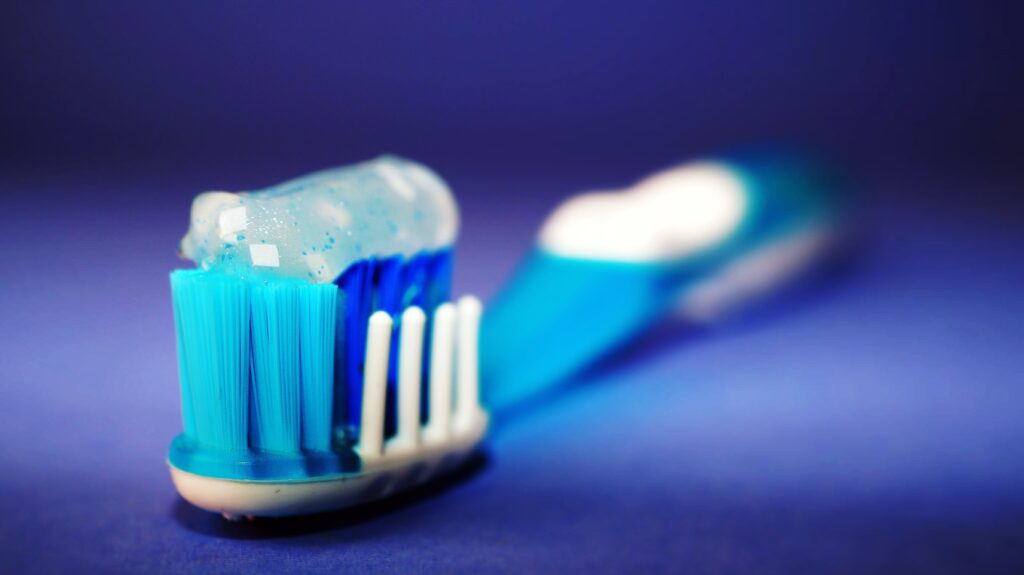
With organic, all natural products becoming more and more popular, it’s no wonder toothpaste has also become a hot topic. To fluoride or not to fluoride? The debate on whether fluoride is truly beneficial or whether the risks outweigh the benefits have become a continuous conversation. Because of the all-natural movement, organic toothpaste that is fluoride-free has become an essential for those who want to avoid “unnecessary toxins” in their lives. But is fluoride truly a toxic ingredient to avoid? We’ll address what fluoride is, it’s benefits and it’s downfalls.
What is Fluoride?
Fluoride is a naturally occurring mineral found in sources like water, soil, and even air. Most commonly it is used in our water systems and oral care like toothpaste to reduce and prevent cavities. Fluoride improves our enamel which is the outer layer of the tooth preventing conditions like tooth decay and cavities.1
Tooth Decay
Tooth decay occurs when the bacteria in the mouth creates acids that break down the enamel. Breaking down enamel can cause holes in the tooth called cavities. Left untreated, this eventually can lead to infection, intense pain and loss of tooth. When sugars are exposed to decaying bacteria in the mouth, acids are created and erosion of the enamel can occur. An early sign of demineralization is a white spot to the tooth. 2
Enamel however, can be repaired through the minerals in the saliva or through fluoride use. If too much enamel is broken down beyond repair, a cavity is formed.2
Why is Fluoride Beneficial to Oral Health?
Fluoride is the 13th most abundant element in the Earth’s crust. As discussed, fluoride helps restore enamel that can be broken down by acids causing demineralization. Fluoride also lowers ph which makes bacteria work harder to maintain a neutral ph. This makes it difficult for bacteria to have any energy to grow and expand. 3
Beyond water and air, fluoride can be found in seafood, teas, some supplements and of course toothpaste containing fluoride. Fluoride ingested is absorbed through the stomach and small intestine and absorbed in bone and teeth, the rest is excreted through urine. 99% of body fluoride is found in bone and teeth. 3
It’s still up in the air whether fluoride is completely essential to the human body but it’s benefits for bone and teeth are evident.3
Fluoride absorbed in bone seems to trigger osteoblasts4 which are cells that repair and create new bone. Though reduced risk of fractures have not been observed with fluoride use.3
Adequate intake of fluoride indicated for toddlers is 0.7mg F/kg max and 3-4 mg max for adult women and men respectively.3
Toxic levels for children and adults is > 5mg F/kg body weight with lethal dose for children being 16mg F/kg and 32 mg F/kg for adults.
Is Fluoride Toxic?
For prevention of tooth decay, fluoride has been added to many water sources, food, salt, and toothpaste though a recommended amount of fluoride for the body has not been determined. With this comes the questioning of fluoride toxicity. More than 80% of fluoride toxicity is found in children under 6 years old. This is typically because children tend to swallow a good amount of their toothpaste which is the main cause of fluoride toxicity. Children also have a more efficient uptake of fluoride by mineralized tissue than adults as this process declines with age.5
Acute signs of fluoride toxicity include:
- nausea and vomiting, diarrhea
- hypocalcemia
- tetany (spasms) of hand and feet
- coma
- renal failure
- death
Long Term Effects of fluoride toxicity include:
- dental fluorosis (discoloration/ streaks of teeth due to excess fluoride use)
- skeletal fluorosis (weakening of bone due to high intake of fluoride-typically from drinking water) stiffness and pain observed
- gastric irritation
- poor renal system
- muscular spasms
Conclusion
It’s clear that fluoride definitely has its benefits in oral care. Tooth decays can lead to systemic infections and, although rare, can lead to possible death so our oral health is just as important as our overall health. It is important to have the upper limits and toxic levels in mind when it comes to fluoride use. As an adult, using fluoride toothpaste has little to no risk as an able-bodied adult is able to spit out any excess toothpaste after brushing and rinsing their mouth out. However non-able bodied people or children may not be able to spit out correctly or may be tempted to swallow the toothpaste containing fluoride so it’s imperative to limit the amount of toothpaste for these individuals and watch the oral care routine religiously.
There are also internal risks when it comes to fluoride toxicity and again, although rare, it should still be of concern especially if you are not aware of the fluoride levels in your water. If you drink tons of water that’s fluoridated, be sure to keep track of the amount of fluoride you are ingesting. If you’re experiencing any of the symptoms related to toxicity, immediately report this and alert medical help.
There are fluoride testing kits available for home use or you may send water samples out to a lab for testing. Based on your age and weight you can determine approximately how much water you are able to safely ingest. Like all of the articles on this site, you do have to do the work to advocate for your health. Although fluoride toxicity is rare, it does happen. Especially if you have young ones at home, during their growing phase they are most susceptible to these toxicities so it’s imperative to do the research to create the safest environment for them and yourself.
Also Read: The Top 5 Beauty Misconceptions in 2024
References
- NIH. “Fluoride & Dental Health.” National Institute of Dental and Craniofacial Research, U.S. Department of Health and Human Services, 2019, www.nidcr.nih.gov/health-info/fluoride.
↩︎ - NIH. “Tooth Decay.” National Institute of Dental and Craniofacial Research, U.S. Department of Health and Human Services, 2023, www.nidcr.nih.gov/health-info/tooth-decay#:~:text=Tooth%20decay%20begins%20when%20bacteria,infection%2C%20and%20even%20tooth%20loss.
↩︎ - Aoun, Antoine et al. “The Fluoride Debate: The Pros and Cons of Fluoridation.” Preventive nutrition and food science vol. 23,3 (2018): 171-180. doi:10.3746/pnf.2018.23.3.171
↩︎ - Cleveland Clinic. (2023, March 27). Osteoblasts & Osteoclasts: Function, Purpose & Anatomy. Cleveland Clinic. https://my.clevelandclinic.org/health/body/24871-osteoblasts-and-osteoclasts ↩︎
- Ullah, R., Zafar, M. S., & Shahani, N. (2017). Potential fluoride toxicity from oral medicaments: A review. Iranian journal of basic medical sciences, 20(8), 841–848. https://doi.org/10.22038/IJBMS.2017.9104 ↩︎





You must be logged in to post a comment.